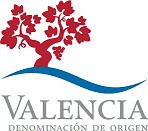Valencia DOs (Part II)
DO Utiel-Requena

The Utiel-Requena DO is located in towards the inland areas of the Valencian Community, one of the Spanish regions, in the transitional area between the Mediterranean coast and the high plateau (La Mancha) of Central Spain and between two rivers: the Turia and the Cabriel. The zone has a continental climate, which means that it suffers from really cold winters, often with hailstorm and frosts; and has to put up with long, dry, hot summer with little rain. However, the presence of the Mediterranean alleviates the temperatures and protects the grapes from the extremes, meaning that Valencia is still one of the great Spanish wine producing regions.
DO Utiel-Requena produces mostly red wines (nearly 95% of the vineyards are of the red variety), and only around 5% of the grapes are of the white varieties. These Valencia wines are classified are follows:
- Superior: Reds should age for 1 or 2 years in a barrel. Whites and rosés should have excellent organoleptic qualities. Reds should have an alcohol content of 11.5% and whites 11%.
- Tradition: The main characteristic is that they are produced from the Bobal variety, which is native to DO Utiel-Requena. If mixed, the other variety should only compose a maximum of 30%. The alcohol content should be at least 12%. These wines can be crianza, reserva, gran reserva, superior and aged in barrel.
- Aged in barrel: Aged in a barrel for under 6 months. Minimum alcohol content of 12%
- Crianza (red): Aged for at least 2 years with a minimum of 6 months in an oak barrel. Minimum alcohol content of 12%.
- Reserva (red): Aged for at least 3 years with a minimum of 1 year in an oak barrel, followed by ageing in bottle for 2 years. Minimum alcohol content of 12%
- Gran Reserva (red): Aged for at least 5 years with a minimum of 18 months in an oak barrel, followed by ageing in bottle for 3 years. Minimum alcohol content of 12%
DO Valencia

DO Valencia, which was established in the year of 1957, is located in the Valencia province in the Valencian Community. It's specially famous for its Sagunto wine, of which the first mention can be found in a manuscript from the 2nd century a. C. Valencia's port and its other excellent communications have made it a trading city, and wine from the Community of Valencia has been exported almost from the time of the Romans. Today, most of its production is destined for exportation even before the production process is over. As beneficial as this is for Valencia, it also means, oddly enough, that their wines are not very popular in Spain itself. This also means that it is a little harder to find wines from Valencia in Spanish bars and restaurants, so the best place to give it a try is in an actual winery in Valencia.
The lands that produce DO Valencia wines can be divided into four sub zones which are as follows:
- Upper Túria: This area is found in the northwest of Valencia, and its high altitude means dry summers and hard winters. The plantation is almost totally made up of white varieties of grapes.
- Valentino: This area is located in the north-center of Valencia province. The diversity of its soils and the gentle climate produce many different types of wines, and permits the plantation of many different classes of Spanish and international grapes: Merseguera, Macabeo or Planta Fina in the white category; Tintorera, Tempranillo or Cabernet Sauvignon in the red category.
- Moscatel de Valencia: This sub zone is also towards the center of Valencia, slightly more to the southwest than the Valentino area. The warm climate, cooled by the Mediterranean breezes, is perfect for the ripening of the Moscatel grapes that they use to produce the Mistela or Moscatel Liquor Wine, a very typical Valencia wine.
- Clariano: This is the most southern production area, and it's divided into two other sub zones: One closer to the coast where white grapes are more common; and one more to the interior of the province, where the red grapes such as Monastrell, Cabernet Sauvignon, Merlot and Tempranillo are dominant.
Spanish Wine History
Spanish Wine Regions and DO
Spanish Wine Tours
Top Spanish designations of origin
Best Spanish Wines
Spanish Wine Production
Spanish Wine Types
Spanish Grapes
Spanish Sparkling Wine: Cava
Sherry Wine
Spanish Wine Cocktails
Spanish Wines in the World
Spanish Wine Prizes
Enotourism
Spanish spirits and liquors
Argentina Wines
Chilean Wines
Other sites